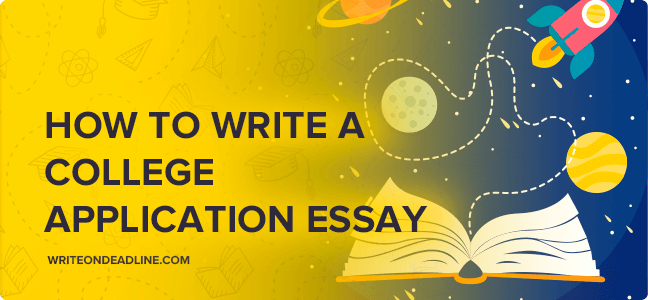How to Write a College Application Essay Step By Step

Table of Contents
Introduction: The Significance of the College Application Essay
Hello future college students, caring parents, and guiding educators! Embarking on the journey toward higher education is an exciting and pivotal time. Amidst the array of forms, tests, and deadlines, the college application essay stands as a unique opportunity. It’s your moment to speak directly to admissions officers, to go beyond the numbers and lists of activities, to show the person behind the grades.
The essay can be a deal-breaker or a deal-maker. It’s where you transform from an applicant into an individual with a story. But beware, common missteps like neglecting the prompt, resorting to clichés, or failing to proofread can undermine even the strongest of candidates. Your goal is to craft a piece that is engaging, clear, and reflective of your true self – without these faux pas.
Understanding the Prompt
Essay prompts come in many flavors, from the straightforward “Tell us about yourself” to the philosophical “What is the meaning of ‘x’?” Regardless of the type, the key to unlocking the prompt is to understand its core question.
Always dig deeper. A prompt asking about a challenge you’ve faced isn’t just about the challenge itself but about how you responded, grew, and what you learned. Take the time to decode what each prompt is really after. Is it your thought process, creativity, resilience, or something else? And remember, no matter how open-ended a question seems, it always serves the same purpose: to get to know you better.
Choosing a Topic
Now, on to selecting your story. This is not just about finding an “impressive” topic but finding your voice within a narrative that is genuinely yours. Start with a brainstorming session. Write down moments that have shaped you, people who have inspired you, challenges you’ve surmounted, or even peculiar hobbies that define you.
Your authenticity is your superpower in the application process. The admissions committee wants to hear your personal voice, not an imitation of what you think they want to hear. So, when you choose your topic, make sure it’s something that excites you, something you can talk about with passion and depth. Your enthusiasm will translate through your writing and capture the attention of the reader.
Outlining the Essay
Much like a skilled architect drafting a blueprint before construction, outlining your essay is a crucial step. Why? Because it gives you a clear roadmap of where your essay will go. It helps you organize your thoughts, ensuring that each piece of your story finds its place from the opening line to the conclusion.
A traditional essay structure starts with an introduction that hooks the reader and presents the thesis – the central point of your essay. The body follows, divided into paragraphs, each expanding on different aspects of your thesis. Finally, the conclusion ties everything together, reflects back on the introduction, and leaves a lasting impression.
Stay tuned, as we’ll dive deeper into each of these steps and give you the tools to craft an essay that resonates and endures. Remember, your essay is your voice in the admissions process – make it sing.
Writing the Draft
Writing can be daunting, but the first draft is about exploration, not perfection. Begin with the mindset that no one gets it right the first time. Here’s how to get the words flowing:
- Set the Scene: Start with a comfortable, distraction-free environment. A clear space can lead to a clear mind.
- Timed Writing Sessions: Set a timer for 25 minutes and write without stopping. When the timer goes off, take a 5-minute break, then repeat.
- Speak Your Mind: If you’re stuck, try talking it out. Record yourself talking about your topic, then transcribe it.
- Start in the Middle: If the beginning is elusive, start with a part of the story you’re excited to tell.
In storytelling, showing is often more powerful than telling. Don’t just state facts about yourself; bring your experiences to life with details, emotions, and reflections. Let the admissions officers see the world through your eyes.
For your introduction, aim for a hook – a sentence that grabs attention. It could be a bold statement, a question, or a scene-setting description. The conclusion should resonate and tie back to your opening, leaving the reader with a strong, final impression of who you are.
Editing and Refining
Now, it’s time to sculpt your words into shape.
- Take a Break: Step away from your essay for a day or two before starting the revision process.
- Read Aloud: This helps catch awkward phrasing and grammatical errors you might miss when reading silently.
- Structure and Flow: Ensure each paragraph transitions smoothly to the next, and your argument or narrative has a logical progression.
- Vivid Language: Replace vague words with specific details that paint a clearer picture.
Feedback is crucial. Share drafts with teachers, friends, or family members who can provide constructive criticism. Be open to suggestions, but stay true to your voice.
Keep an eye out for grammar, punctuation, and style. Utilize tools like Grammarly, but don’t rely on them exclusively. A human ear can catch nuances a machine might miss.
Final Touches
Before you declare your essay complete:
- Adherence to Guidelines: Double-check that your essay meets the word count and format requirements.
- Originality: Run your essay through a plagiarism checker to ensure all of your content is original.
- Authenticity Check: Ask yourself or someone who knows you well if the essay truly reflects your voice and character.
Finally, go through a meticulous proofreading checklist. Look for typos, check your punctuation, and ensure the essay is clean and error-free.
Conclusion
Students, remember that the essay is your moment to shine. Use it to show the colleges who you are, what you care for, and where you want to go. Don’t aim for what you think they want; aim for a true reflection of yourself.
Parents and educators, encourage your students to be themselves. Remind them that resources are available at every turn, from school counselors to credible online platforms.
Additional Resources
To further aid you in your essay writing journey, consider the following resources:
- Books: Look for titles like “On Writing the College Application Essay” by Harry Bauld or “College Essay Essentials” by Ethan Sawyer.
- Websites: The Purdue Online Writing Lab (OWL) is excellent for writing resources and style guides.
- Tools: Tools like Evernote can help you organize your thoughts, while Hemingway Editor can assist in making your prose clear and concise.
For those who require more personalized assistance, reaching out to a professional essay coach or a writing tutor can be beneficial. Their contact information can usually be found through your school’s counseling office or by a simple online search for reputable professionals.
Keep your chin up and your pen moving – your story is worth telling. Good luck!

